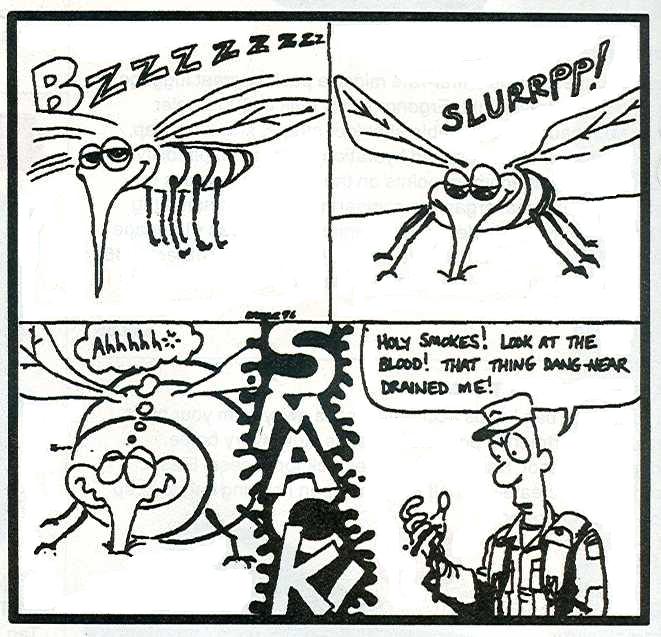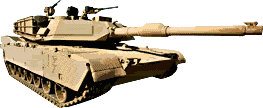 TRAILERs AS MOBILITY ENHANCERS
TRAILERs AS MOBILITY ENHANCERS
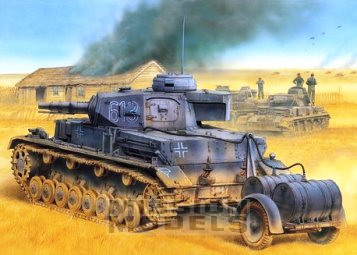
German Army tanks in WW2 used supply trailers for extra range and units-of-fire
 TRAILERs AS MOBILITY ENHANCERS
TRAILERs AS MOBILITY ENHANCERS

German Army tanks in WW2 used supply trailers for extra range and units-of-fire
TRAILERS FOR COMBAT MANEUVER
The best Armored Brigade (125th Guards tank Regiment--Armored Brigade at NTC) in the country spends 50% of its time in the field. They fight a 14-day war every month. They have the operational aspect of fielding a unit down to an exact science. Many of their M113 Gavin ESVs tow supply trailers on their way to war. All of the Army's tracked Armored Fighting Vehicles (TAFVs) could tow a trailer.
When ambushed, many light infantry Soldiers drop their rucks and fight as SOP. They recover their rucks when it is safe again. Tanks could have the same option with trailers. Tanks could be equipped with a trailer hitch that could be quick-detached (QD) from inside the tank. This could be augmented by an emergency explosive charge built into the hitch. If the main disconnect switch failed, the charge could be set off by the TC. With this system tankers would not be forced to fight a battle while towing a trailer. The U.S. Army's Explosive Stand-off Minefield Breacher (ESMB) uses a M1 Abrams tank to tow a Mobil-Trac trailer with a rocket line charge that has a "jettison hitch". A ballistic protective armor wall surrounds the ESMB. Thus, it is possible for the turbine engine heat from the Abrams to be countered to tow a trailer.
This is the main problem that all tankers will bring up; the tremendous heat from the exhaust of the M1. This presents a serious problem. I believe that a heat shield could be created that could protect most cargoes from this danger, like the ESMB tracked trailer does. This may or may turn out to be very expensive. Or we can do as Weapons Analyst Carlton Meyer suggests and put diesel engines in "M1A3"s that would be slated to act as infantry fire support tanks or not buy 4 F/A-18 Super Hornets at $73 million dollars each that are going to crash anyway and are useless in a city fight and buy 50 M8 Buford Armored Gun Systems for units like the 2nd ACR. A shielded M1 Abrams or diesel powered infantry fire support M8/M1A3 tanks towing trailers. But look at it in perspective, the AF has no problem dumping $5,000 worth of fuel per plane, just so they can have an easier landing. The Navy spends one million per Phoenix or AMRAAM missile, so their pilots can stay out of a close-range dog-fight. All military jets have one million dollar ejection seats. Certainly we can spend a few dollars to keep our infantry well-supplied on the ground.
If it doesn't work out, and we're stuck with only personnel-carrying tanks towing trailers, "and that ain't bad" since there are 284 x M113A3 Gavins and 254 x M2s in a 3 Heavy Brigade Combat Team's TOE---that is still more than 2/3rds of our tracked vehicles. We just need to assign at least 42 x 11-ton M113A3 Gavins---a company's worth operated by one Battalion in each of the 3 Brigades in every light, airborne, air assault division instead of their vulnerable, road-bound 8, 000 pound Humvee and 22,000 pound FMTV resupply trucks already in use to achieve the same effect.
The trailer supplies could be mobile-loaded with All-Terrain All-Purpose Carts (ATACs) so that the infantry can remove some of their supplies as needed, then move them easily to many dispersed locations. One trailer could supply a platoon for a week. One platoon of tanks (four) could tow trailers that supply a company of infantry for that same period of time. In a company team (armor heavy or infantry heavy) the team could now be made up of one light platoon (All/Extreme-Terrain Bicycle), one mech platoon and one armor platoon.
With trailers the team would be self-sustained, no BN trains to slow them down. Just think of what a BN task force could do. BN trains could become a thing of the past. I do understand that even a BN with trailers will eventually need re supply, but most modern battles will be over in under 100 hours---before that will be necessary. Even if they aren't, it is a better system than we have today. Motor transport comes forward and retrieves the trailers, fills them and shuttles them forward. Besides, BN trains always travel with BDE trains, so why shouldn't they just become part of them? (but that is a different article).
EXTERNAL PODS
All U.S. tanks and AFVs should carry disposable external fuel tanks like the Russian tanks have. Or better yet rubber-bladder FLEX-CELLs. In addition to this, they could easily carry external cargo pods. These pods could carry just about anything. They could carry equipment for the light infantry or for the tankers. The pods should be connected so that the TC can "eject" them while he is safe inside the tank. They wouldn't be so cumbersome that an explosive backup system similar to the one for the trailer hitch would be necessary.
They pods could be designed small enough to have fat-tire All-Terrain wheels for low ground pressure and be moved by the infantry. The German Fallschirmjaegers in WWII used airdropped equipment containers with wheels on them. This would be an easy way to keep a TOW 2 ATGM with light infantry, without wearing the Soldiers out trying to manpack it. There are unlimited possibilities.
 youtube.com/watch?v=LlnDzCda_gY
youtube.com/watch?v=LlnDzCda_gY
The recent "Thunder Run" of the 3rd ID into Baghdad highlights the need for trailers so units can carry their own resupply since unarmored resupply trucks were lost to enemy fire trying to get through--jeopardizing the entire mission.
Forge the Thunderbolt!
CPT Jeffrey Schram, Armor
2012 REVELATIONS: The Israeli Defense Force (IDF) IS USING SUPPLY TRAILERS!
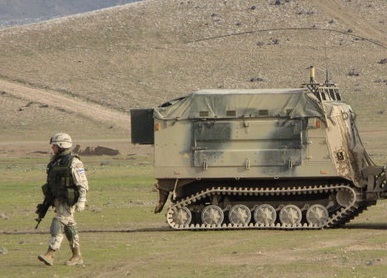
Announced by Armor Command August 10, 2009 because of positive feedback from the 2006 Lebanon conflict, a new under armor trailer to be attached to the back of specially designated Merkava [heavy] tanks within the combat force depending on assigned task. This trailer includes new Urdan 360° wheels to carry onto the field of combat: fuel, ammo, water, food for the entire Merkava tank company. Therefore trailer is assigned to each Merkava company, brigade or even frontal command.
Best-selling author, Victor O'Reilly made the same argument for trailers to Colonel Douglas Macgregor years ago. He was right, but current Army Chief-of-Staff, General Odierno is fixated on replacing Bradleys (RACKETEERING = $) inside the existing force structure than actually gaining new capabilities. Dumb, but to be expected of weak bureaucrats who always seem unable to gain in military capabilities as Dr. Dixon warns us in The Psychology of Military Incompetence. Weak bureaucrats certainly do not want self-sufficient units capable of initiative! They know that the underlings they have abused if given a chance will act up--look at the recent Afghan massacre by a demented NCO for example. Resupply trailers have been done before by the Germans in WW2 albeit in wheeled, unarmored trailers that were easily exploded....how about doing it RIGHT with an ARMORED and TRACKED trailer?
Why have a Jessica Lynch underclass in wheeled trucks THAT CANNOT SURVIVE TO REACH YOU?...when you can take along your own logistics? Swap-out trailers when TRACKED resupply does arrive instead of wasting time/exposure doing break-bulk...
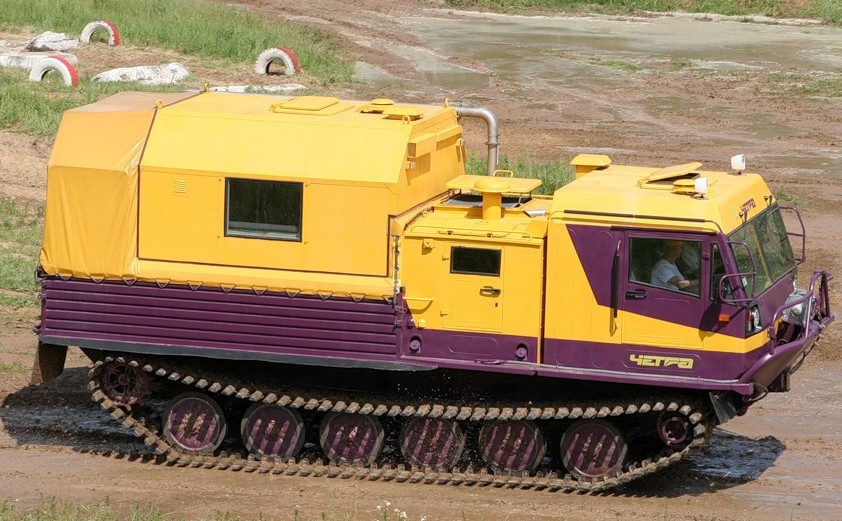
Former USMC Captain Carlton Meyer's Tracked Resupply Web Page:
http://g2mil.com/tracked-resupply.htm
An U.S. Army logistics officer writes:
It was mentioned in von Mellenthin's Panzerschlat:
youtube.com/watch?v=HGWOZEkp4Mg
Page 187: The Germans lost the chance of victory because they had based their mobility on wheels instead of tracks. On these mud-roads the wheeled transport was bogged when the tanks could move on. Panzer forces with tracked transport might have overran Russia's vital centers long before the autumn, despite the bad roads.
Page 188: In fact the Russian campaigns show that the more tank forces can be supported and supplied by air, the more extended will be the mobility of their armored units and the better the chances of success.
Page 281: Fuel and ammunition supplied for the armor must be assured during the battle by armored supplied carriers. Much experience is needed to carry out this difficult operation. (One from my personal experience should also add standard packaged, containerized and modular.)
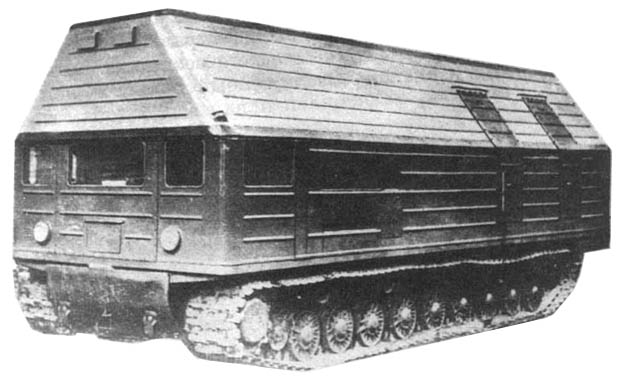
Early Russian Tracked TransporterThis lesson was not lost on the Russians and before the IDF started using tracked transporters the Russians were already experimenting with them a long ways back.
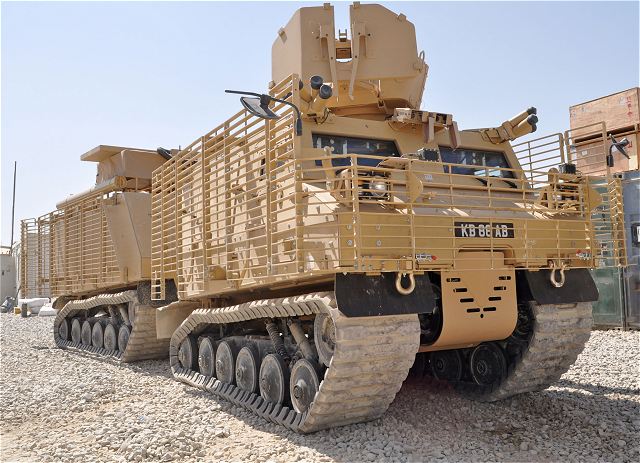
Bv206S in Afghanistan with anti-RPG Slat ArmorThe Swedes came after with their Bv206 series. Attached are some pictures I picked up over the years don't remember when or where I got it from other than most recent ones were taken in Russia.
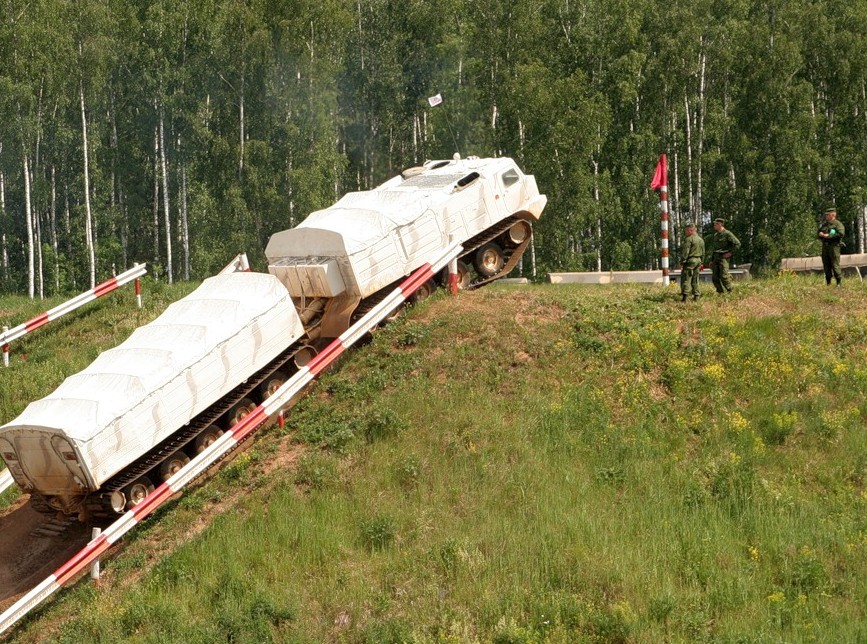
The Smart Russians Know the Need for Cross-Country Mobile Resupply
So what you recommend is true even way back then and history has shown the need for all of this with logistics that move and support tank formations.
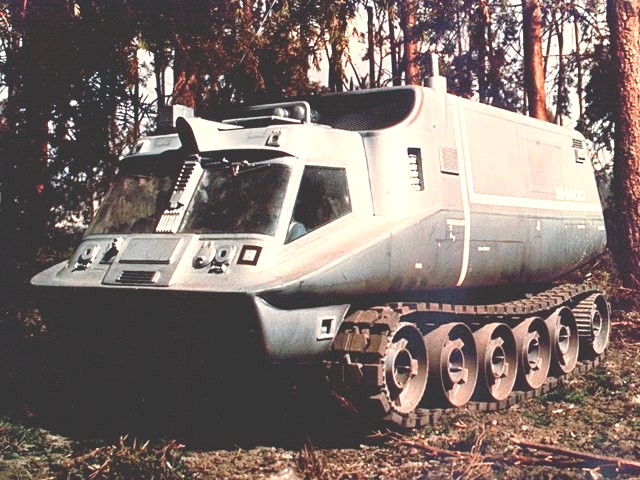
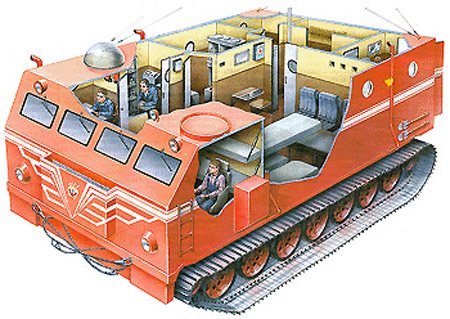
These armored trailers are a great idea, though I wouldn't attach these to tanks but rather to armored transporters. IMO tanks need to be unencumbered so that when the need arises damaged tanks that are reparable or tanks in need of maintenance can be hitched to other tanks. There is only so much tank recovery assets (M88A2 HERCULES) to go around (21 in a Forward Support Battalion supporting an AOE armor brigade or 7 M88s per tank or mech infantry battalion) so having the ability of tank tow tank definitely made it possible for me to as a tank battalion maintenance control officer when we were not being resupplied or barely being resupplied of CL IX during the first three months in Iraq. Then due to the interest of costs only fuel and ammo at a minimum needs to be armor shielded. With that I think a 20 foot container shroud or housing made of ceramic armor plate sections (hence replaceable) would be an inexpensive but effective solution. The tracked transporter of course must be armored along with its cargo bay (which would be great in protecting bulk fuel tank in armor) but armor trailers isn't practical for line haul and bulk logistics so that is why I recommend a armored container shroud or housing that would fit over a standard 20 foot ISO container or be fitted to cover a standard LHS or PLS flatrack pallet. If hauling say tank road wheels such a thing won't be needed but if hauling say FUP, then I think this armored shroud or housing would be useful.
Finally, the armored trailer that I think you are recommending would best be suited as carrying something that is important but doesn't need to have another transporter to carry it and at the company level. A company orderly room can have one armored tracked transporter and an armored tracked trailer because God knows that no matter what paper work and mail distribution always need to be done. The same can be done for the company supply room where one transporter and trailer. We can also haul an armor protected water purifier by trailer that will find any water source no matter how putrid and make it potable to fill all water buffalos. With this same tracked trailer we can get creative. An armored computer carrier // digital network trailer for all the non-voice commo data pushes, a tracked armored digital retrans trailer, a company cold storage trailer, battery charger / exchange point trailer, armored bulk water transport, etc. The point is that a tracked transporter would have a lot of horsepower to it can carry a trailer and hence fewer drivers needed.
My personal favorite on a cool to have basis is a mobile armored tracked "gut truck" trailer. Heats T-rations and individual meals automatically keeps them warm so food is cooked while in transport. One per company should do it and this can be the job of the supply NCO and with that the reduction to the 92G MOS (food service specialist) and the end to the MKT in an armored battalion. What I am thinking is to have basic life functions be handled by a general supply NCO or have just one 92G per company who's sole mission in life is maintaining this food cooking trailer where he can heat up a company sized worth of individual meals at a time to which like a gut truck can have soldiers grab and go a hot meal. For OPSEC this trailer will have to be heavily insulated to avoid IR detection.
 youtube.com/watch?v=AN57qqcxqdQ
youtube.com/watch?v=AN57qqcxqdQ
2005 UPDATE: SELF-SUFFICIENCY FOR INDEPENDENT OPERATIONS
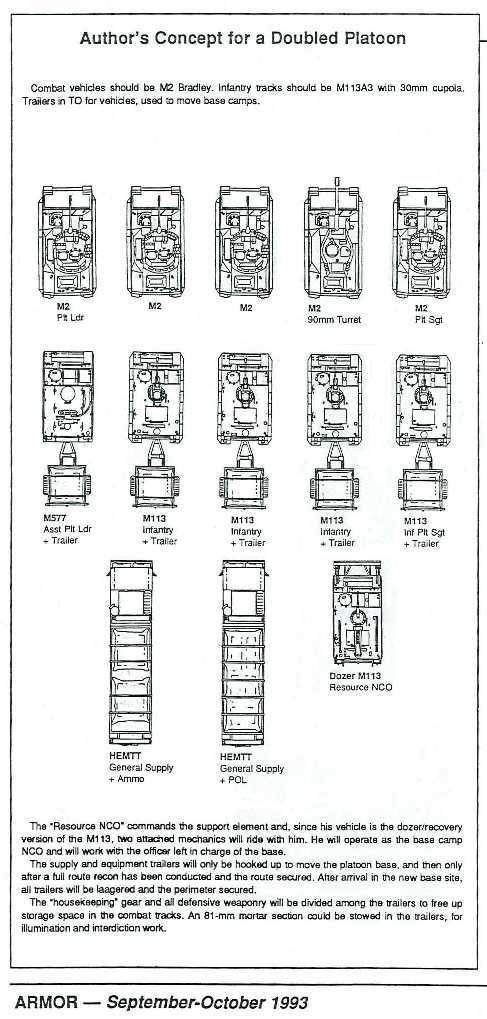
The Concept
1st Tactical Studies Group (Airborne) Director Mike Sparks: Let's assemble everything together to exploit Jeff's quick-detachable trailer concept. With these QD trailers, we can have armored forces able to double and even triple their ranges and mission times to enable Ralph Zumbro's Independent Operations ideal which is a mini-form of the Russian Airborne's Operational Maneuver Group (OMG). Its exactly what an Air-Mech-Strike 3D maneuver force should be---self sufficient like Sherman's "flying columns" were in the campaign that ended the U.S. Civil War. However, we will not be living off the land just for food & water for our troops but for their tanks. To begin with we do not have 70-ton M1 heavy tanks with 7 gallons per mile fuel use rates since they are not C-130 and helicopter air-transportable for 3D maneuver. Nor will we have 33-ton Bradleys at 1 mpg fuel consumption rates that are not bas options as Ralph proposed in his 1993 U.S. Army ARMOR magazine article where the drawing above comes from, they are just too heavy to fly by C-130s and existing helicopters. The "Tanks 'n Brads" would comprise the 2D maneuver element of a notional Non-Linear Maneuver Brigade (NLMB) that would have heavier resupply means by way of XM1108 AmphiGavin tracks delivering their FLEX-CELLs in swap-out QD trailers. For the 3D maneuver force we will have 300 mile range M113 Gavins and M8 Buford/Tracer/Thunderbolt AGS light tanks with a reasonable 3 mpg fuel rate. If these are hybrid-electric drive (HED) variants, range doubles to 600 miles and fuel economy goes to 7 mpg. This will also fully exploit QD trailer self-logistics for decisive maneuver effects to locate, encircle kill/capture sub-national groups who now think they are safe hiding in difficult terrain amongst sympathetic populations. In nation-state wars, the 3D OMG can cut-off the escape of enemy leaders, block the retreat of enemy forces retreating from the 2D maneuver force push overland, take key objectives like bridges, road junctions etc. as classic cavalry should.
OK?
Fuel
So you have an OMG "MECHANDO" rifle company team with 12 x M113A4 Gavins and 4 x M8 Buford AGS light tanks.
Your "VULTURE squad" track finds an abandoned fuel cache of 55 gallon drums, you know the kind that always blows up in fireballs in action movies?
The Gavins each need 95 gallons of fuel, and the Bufords need 150 gallons.
Aside from instantaneous fuel theft, what would be the speeds of using hand pumps vs. electrical pumps to refuel all these vehicles?
a. Each vehicle has its own pump
b. Only the VULTURE squad has the pump
Hand Pump is 10 gallons/minute so it would take 10 minutes per Gavin. That's 120 minutes. 15 minutes per Buford so that's another 60 minutes for a total of 180 minutes or 3 hours. Is this too long?
Electrical pump could go how fast? 100 gallons/minute? That's 1 minute per Gavin for a total of 12 minutes. And 1.5 minutes for the Bufords for a total of 6 minutes. Total steal refuel time is 18 minutes. Grab 'n go.
Also note these VULTURE pumps solve anyone with a complaint of running over their FLEX-CELLs to pressurize them to refill their track's tanks up.
VULTURE Soldiers must also be trained to mix oil with captured gasoline to make "Hillbilly Diesel" to run their tracks in an emergency. Its not good enough to TALK abouit it, THIS HAS TO BE PRACTICED WITH A GUINEA PIG TRACK NOW IN PEACETIME so its a capability in wartime. This is yet another Larteguy-esque "trick" or experimentation that needs to occur and mindless garrison BS stopped.
Mechanical Break-Downs
First off the Gavins/Bufords are VERY robust vehicles not prone to break-downs from operating against the earth. Against the enemy their battle damage will require repairs. The first thing is we have to ADMIT that vehicles will be hit and catch on fire. Its too late once the vehicle is totally burned through to repair it, the Germans knew this in WW2 and kept firing into our tanks until they were fully engulfed so we could not repair them and return them to duty as LT Belton Cooper notes in his book, Deathtraps. We MUST field a firefighting capability via Qdtrailers or specialized Gavin variants so as soon as a vehicle is hit and catches fire we can put the fire out and rescue the crew and the vehicle:
reocities.com/armorhistory/tafvfirefighting.htm
Next, some will complain that if we use single-piece bandtracks they will be hard to repair or replace. Not true. We have the details worked out to jack up one side of the vehicle to remove the bandtracks to tow by roadwheels or replace the broken bandtrack if it cannot be spliced together:
combatreforn.org/bandtracks.htm
Ammo
The VULTURE squad would collect enemy weapons & ammo into their trailer to redistribute throughout the force so they could fire them through their VULTURE GUN MOUNTS and through weapons hatches. In event that U.S. logistics resupply cannot reach the OMG, it can use the enemy's own weapons & ammo against them.
Food
The OMG can live off the land with SERE skills if their lightweight rations run out.
Water
Water can be collected and purified even if the infantry is dismounted from the OMG's TAFVs.
Batteries
Each TAFV has an AC power inverter to charge dismounted use (NVGs, flashlights, portable radios etc.) batteries if conventionally powered. If HED the battery charging is done by the generator. Even if dismounted, the infantry can recharge their batteries using bikes, carts and ped/hand generators. Details:
combatreform.org/batterychargesolution.htm
Wastes
Soldiers will be able to relieve themselves of liquid body wastes via a tube out the rear door firing ports, and a 5-gallon bucket with toilet seat top lined with a trash bag filled with absorbent kitty litter. Details:
reocities.com/paratroop2000/surviveiraqgearlist.htm
Obviously, the OPTIMAL way to get rid of human wastes is a purpose-built incinerator commode in the back of the track with the urine sent out on a tube and the solid waste BURNED UP. The British Warrior MICV has a chemical commode that requires emptying, but proves that the concept is desirable & viable.
Burrowing
Designated Gavins will have dozer blades to entrench the entire force at will into hull-down positions:
reocities.com/armysappersforward
BETTER TRAILERS FOR PALLETIZED LOGISTICS
Heavy Army units use the Palletized Loading System (PLS) of flat racks to resupply themselves but these are too heavy for light units to use. Unfortunately, U.S. Army light units are stuck with break-bulk trailers which force them to waste precious time hand loading and unloading individual items from their box "wagons". Even these simple trailers are often defective.
Army trailer is a green lemon"This isn't rocket science says senator probing Pentagon's $57 million mistake
By Lance Guy
Scripps Howard News ServiceWashington -- All the Army wanted was a simple two-wheeled trailer, similar to the ones on U-Haul lots, to tow behind their new Humvees.
But after buying 6, 700 trailers ar $10, 521 each, the Army has discovered they are so unsafe they either damage or tip over the Humvees towing them, and have an aluminum tow bar so weak that it broke repeatedly in field tests.
A report by the General Accounting Office said that the Army earlier this year considered fixing the problem by installing new steel tow bars on the trailers, but the $640 fix made the trailers so heavy they cracked the back bumpers of the Humvees and required new trailer braking systems so drivers could keep them under control.
Sen. Tom Harkin (D-Iowa), who ordered the GAO investigation after a Pentagon whistleblower told him about the expensive trailer problems, said the Army should have adequately tested the trailers before buying any.
The GAO report said the blame for any flaws belongs to the Army and not the contractor., Electrospace Systems Inc. of Richardson, Texas, because the Army specified the design of the trailers.
"This isn't rocket science". Harkin said. "These are simple trailers".
The Pentagon, which reviewed a draft of the GAO findings, acknowledged the Army is stumped about what to do with the faulty trailers., which cost the taxpayers $57 million and are now kept in storage. The GAO said the Army is designing a new and safer trailer, which is slated to be included in next year's Pentagon budget.
George Schmeiter, director of strategic and tactical systems, said the Army won't buy any new trailers until tests show they are safe.
The GAO said the Army began buying the trailers in 1996 at a price tag of $6, 700 each even though three earlier, Army field tests showed they damaged Humvees. The cost of the trailers increased more than 50 percent over the next three years because the Army decided other purchases had higher priority than Humvee trailers and renegotiated the contract in 1997 to reduce the size of the purchase.
The Army stopped buying the trailers in June.
THE ANSWER: BUTCH WALKER'S AMAZE-N-TOW!: BREAKTHROUGH! A WAY TO PICK-UP & MOVE ECDS BUNDLES AND KICK PALLETS: the Amaze-N-Tow (ANT) combination forklift/trailer!
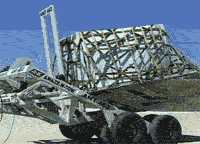
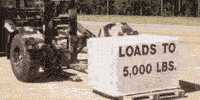
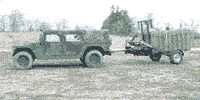
Inventive genius, Butch Walker's AMAZE-N-TOW (ANT) could emplace and move ECDS pallet bundles such that Airborne units can do this themselves! The ANT is a combination MHE forklift and trailer. All they need is to parachute airdrop the ANT-463L version on its own ECDS (dis-assembled) or on a Type V airdrop platform with even a pathetic Humvee or M-GATOR or the superior Polaris Ranger All-Terrain Vehicle (ATV) truck as the prime mover connected to it and ready to roll after de-rigging on the DZ. All that needs to be done is have the Airborne/Special Operations Test Board at Fort Bragg and Fort Lee Air Delivery Center to certify the exact airdrop rigging procedure after some test drops.
For Air Assault helicopter and fixed-wing airland operations, you must understand that the 463L and ECDS pallets are "fuselage stuffers", meaning they are 108 inches long x 88 inches wide which is essentially all the way to the fuselage skin on the C-130 and CH-47. For a MHE device like ANT to lift 463L/ECDS pallets and have itself fit inside the aircraft is a difficult task because MHE has to be bigger than the things they lift. On all C-130 and larger fixed-wing aircraft, 463L/ECDS pallet rollers are standard without interfering with troop seating so the rollers are always there. The ANT-463L at 244 inches long and 98 3/4 inches wide assembled can be placed on top of a pair of 463L/ECDS pallet or Type V modular airdrop platform of appropriate length with the designated prime mover and easily fit inside the C-130 Hercules aircraft which has a floor width to accept the 108 inch length of 463L/ECDS pallets and actually widens as the fuselage curves up to 120 inches of width.
The CH-47 Chinook's 90 inches of internal width through the rear ramp is not wide enough for 463L/ECDS pallets lengthwise but carry them width-wise on the 88 inch sides and thus cannot carry the ANT-463L assembled. When HICS is used, 463L/ECDS pallets have to be loaded in 88 inch width-wise to fit into CH-47s. The ANT-463L can be dis-assembled and strapped to the cargo hooks on the CH-47 floor as long as at least 5 Soldiers are on board to carry its parts off the helicopter and re-assemble it on the LZ. This concept has been used in combat successfully--the 75mm pack howitzer in WW2 broke down into 5 pieces that could be parachute dropped separately and/or moved by pack mules. The British Army each year runs a team obstacle course competition where a small howitzer in pieces must be taken over obstacles, re-assembled and fired to finish the event for time. With the kick-pallet system, 5 Soldiers and a kick-pallet or M-GATOR or Polaris Ranger ATV prime mover could be carried carried with the dis-assembled ANT-463L. Another option is to have the HICS rollers installed and strap the ANT-463L dis-assembled onto a 463L/ECDS pallet and roll it off with other 463L/ECDS pallets of supplies, some Soldiers and an ATV prime mover. Once the ANT-463L is re-assembled on the LZ by the Soldiers, it can pick up the 463L/ECDS bundle it came on and be towed by the prime mover to pick up other pallet loads etc. The benefit of strapping the ANT-463L and man-handling its parts out would be not to have to contend with an empty 463L/ECDS pallet when finished. The benefit of rolling the ANT-463L off on a 463L/ECDS pallet would be speed.
SIDEBAR: Light Units that don't have to Parachute Jump: 10th Mountain Division, 25th Light Infantry Division can use 40" x 48" warehouse pallets simpler and lighter than ECDS pallets
Certainly, the ECDS should replace the 463L pallets in U.S. Army use. However at 650 pounds they are heavy and cut into the payload of smaller aircraft than the 21-ton lifting C-130 fixed-wing aircraft like the 12.5 ton limited CH-47 Chinook helicopter. Butch Walker has a smaller ANT MHE forklift/trailer than can roll-on/off towed by a prime mover from inside a CH-47 Chinook during Air Assault operations. This smaller ANT would lift/move 40" x 48" warehouse pallets simpler and lighter than ECDS pallets, effectively improving light force's logistics from the current time consuming break bulk by hand of items into and out of truck beds in small quantities. A double wheel ANT can have band tracks placed on top to improve cross-country mobility.
NO!
YES!


ANT Military Models
ANT-10K
Heavy Lift ANT-463L ANT-5000MT

Printable
Version


Butch Walker's smallest military ANT, the ANT-5000MT is designed to carry standard 40" x 48" wood, metal or plastic "small" or "kick" pallets. Light infantry units could easily speed their resupply by palletizing their logistics with the ANT-5000MT to avoid having to break-bulk by hand supplies into and out of truck cargo beds. Currently, light units after receiving a "kick" pallet from a CH-47 Chinook helicopter must break the pallet apart and distribute its supplies into manpack loads or reload a truck cargo bed wasting time and exposing them to enemy fire because they have no way to pick the pallet up and take it with them as-is. If each light infantry rifle company had just one ANT-5000MT towed by a Humvee, M-GATOR or larger vehicle, they could receive palletized supplies dropped off to them and lift them off the ground in seconds and move them freely across the battlefield. ANT mobility for small pallets opens the door for special pallets pre-loaded with triple strand concertina wire to rapidly lay out protective wire barriers in minutes compared to the current hours required to hand emplace them. The 5, 000 pound (2.5 tons) cargo capacity by towing exceeds the truck bed capacity of the Humvee (1.25 tons) and M-GATOR (500 pounds) offering light forces greater ammunition for superior firepower, more food/water for longer mission reach.
For "large" pallets like 80" x 84" inch 463L, Enhanced Container Delivery System (ECDS) pallets, the ANT-463L and ANT-10K Heavy Lift models are available. These large pallets are used for aircraft airland ands airdrop delivery of supplies for Airborne, Air Assault and any Army unit that uses an air line of communications and resupply. Since these pallets are costly and need to be recovered for re-use, ANT-463L and ANT-10K are ideal tools for Airborne, Air Assault units to train now as they would fight instead of throwing away costly plywood skidboards. When training dollars are scarce, the purchase costs of the ANT and reusable pallets will quickly pay for themselves over throw-away plywood and insures America's Soldiers can train exactly as they would fight.
* NOTE: All ANTs can have their civilian tires/rims replaced by MIL-SPEC Humvee tires/rims with run-flats for greater combat durability. We suggest you buy ANTs with civilian tires/rims to keep purchase price down and use them in training. Prior to war-time use, order Humvee tires/rims and retrofit to ANTs using the supply system to increase resistance to enemy fire.
We can do this. ANTs run for about $10K.
Details: liftngousa.com
amazentow@earthlink.net
(800) 688-7627
CPT Schram is a graduate of Liberty University with a degree in Elementary Education. He is a graduate of U.S. Army enlisted Basic, Armor AIT, OCS, Armor Officer's Basic Course, Chemical Officer's Reserve Course. He went to NTC as both Armored BlueFor and as Light infantry OPFOR.
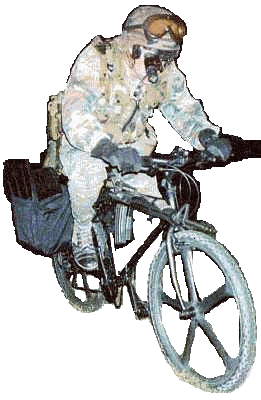
He jumped as a Grenadier as the ATAC-towed ATB component for the Operation DARK CLAW parachute assault demonstration to SF Command. He is married to the former Taya Enos who is a professional consultant in the field of photo preservation.
Ralph Zumbro writes about VULTURE fuel ops:
"Mike;
there's a third way. you can buy a pump that is driven by a belt off the engine of any vehicle. a simple hand clutch will power it....AND it can work as a bilge pump as well."
